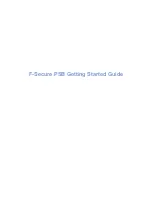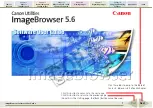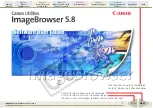
For detailed information about the modules that support Fast Ethernet and Gigabit
Ethernet interfaces on the ERX14xx models, ERX7xx models, and the ERX310 router:
•
See
ERX Module Guide, Table 1, Module Combinations
for detailed specifications of
these modules.
•
See
ERX Module Guide, Appendix A, Module Protocol Support
for information about the
protocols and applications that Ethernet modules support.
For detailed information about the modules that support Gigabit Ethernet and 10-Gigabit
Ethernet interfaces on the E120 and E320 Broadband Services routers:
•
See
E120 and E320 Module Guide, Table 1, Modules and IOAs
for detailed specifications
of these modules.
•
See
E120 and E320 Module Guide, Appendix A, IOA Protocol Support
for information
about the protocols and applications that Ethernet modules support.
Numbering Scheme
When configuring or managing an interface, you must know the numbering scheme for
identifying an interface. The numbering scheme depends on the type of E Series router
that you have.
ERX7xx Models, ERX14xx Models, and the ERX310 Router
Use the
slot/port
[
.subinterface
] format to identify Ethernet interfaces and subinterfaces.
•
slot
—Number of the slot in which the line module resides in the chassis.
In ERX7xx models, line module slots are numbered 2-6; slots 0 and 1 are reserved for
SRP modules. In ERX14xx models, line module slots are numbered 0–5 and 8–13; slots
6 and 7 are reserved for SRP modules. In an ERX310 router, line module slots are
numbered 1–2; slot 0 is reserved for the SRP module.
•
port
—Number of the port on the I/O module.
On the OC3-2 GE APS I/O module, you can configure only a Gigabit Ethernet interface
in port 2; ports 0 and 1 are reserved for OC3/STM1 ATM interfaces.
•
subinterface
—Subinterface number of the protocol or VLAN subinterface.
For information about installing line modules and I/O modules in ERX routers, see
ERX
Hardware Guide, Chapter 4, Installing Modules
.
E120 and E320 Routers
Use the slot/adapter/port [.subinterface] format to identify Ethernet interfaces and
subinterfaces.
•
slot
—Number of the slot in which the line module resides in the chassis.
In the E120 router, line module slots are numbered 0–5. In the E320 router, line module
slots are numbered 0–5 and 11–16. For both routers, slots 6 and 7 are reserved for SRP
modules; slots 8–10 are reserved for switch fabric modules (SFMs).
•
adapter—
Number of the bay in which the I/O adapter (IOA) resides.
169
Copyright © 2010, Juniper Networks, Inc.
Chapter 5: Configuring Ethernet Interfaces
Содержание JUNOSE 11.2.X MULTICAST ROUTING
Страница 6: ...Copyright 2010 Juniper Networks Inc vi...
Страница 8: ...Copyright 2010 Juniper Networks Inc viii JunosE 11 2 x Physical Layer Configuration Guide...
Страница 16: ...Copyright 2010 Juniper Networks Inc xvi JunosE 11 2 x Physical Layer Configuration Guide...
Страница 24: ...Copyright 2010 Juniper Networks Inc 2 JunosE 11 2 x Physical Layer Configuration Guide...
Страница 66: ...Copyright 2010 Juniper Networks Inc 44 JunosE 11 2 x Physical Layer Configuration Guide...
Страница 228: ...Copyright 2010 Juniper Networks Inc 206 JunosE 11 2 x Physical Layer Configuration Guide...
Страница 247: ...PART 2 Index Index on page 227 225 Copyright 2010 Juniper Networks Inc...
Страница 248: ...Copyright 2010 Juniper Networks Inc 226 JunosE 11 2 x Physical Layer Configuration Guide...
















































